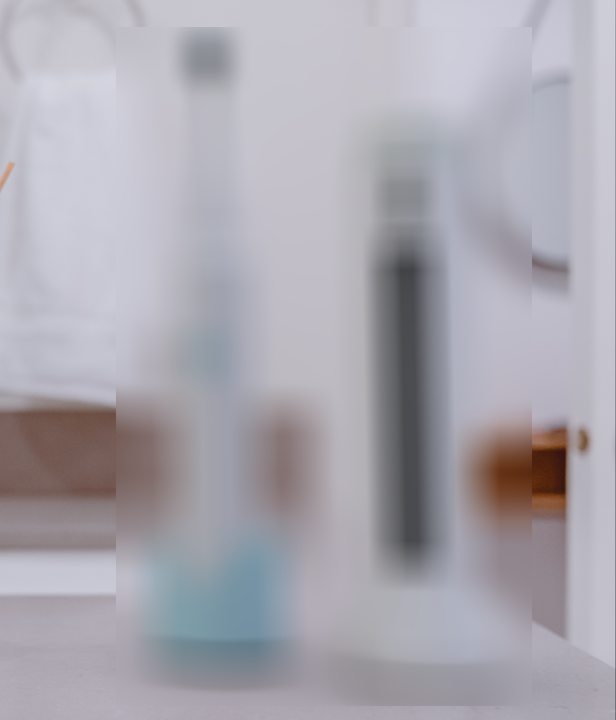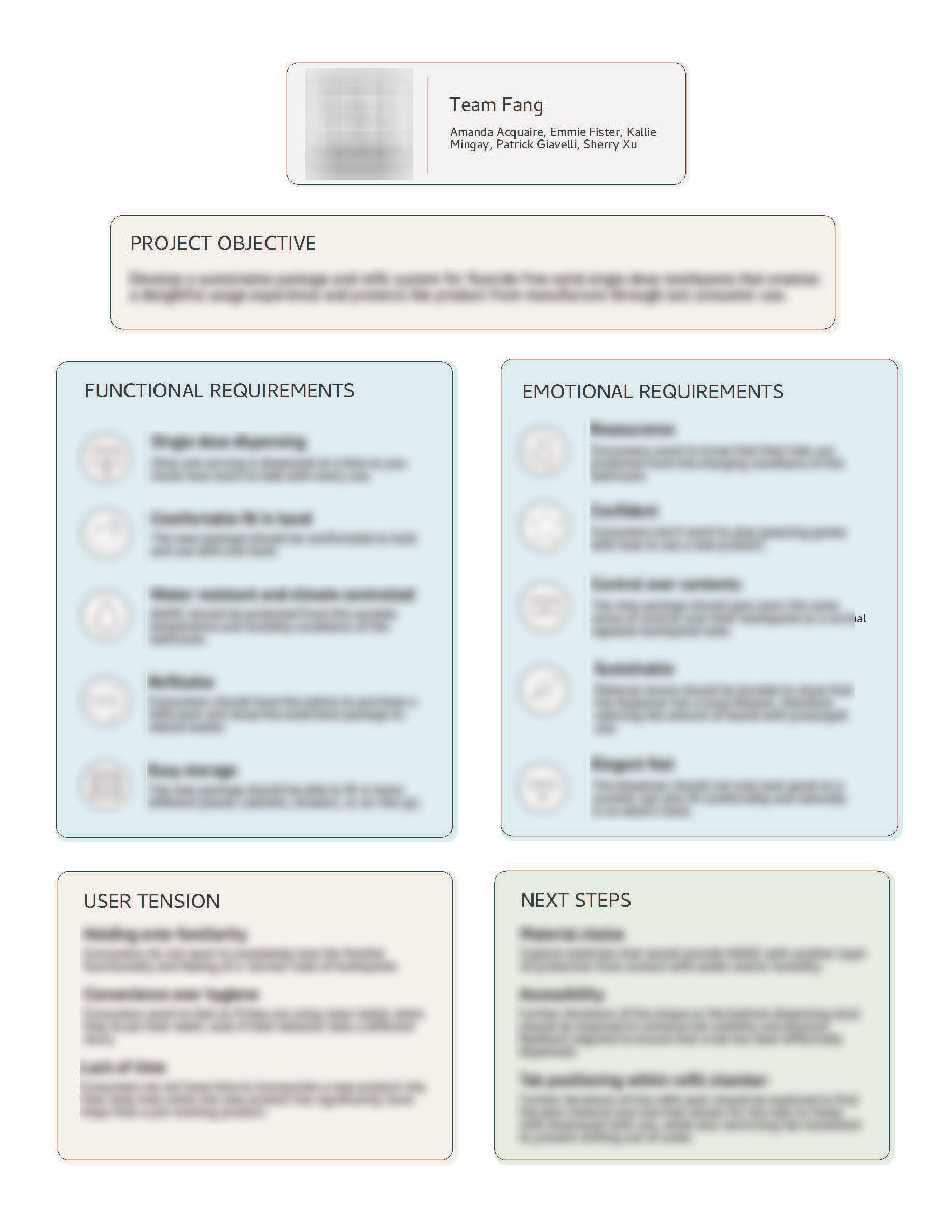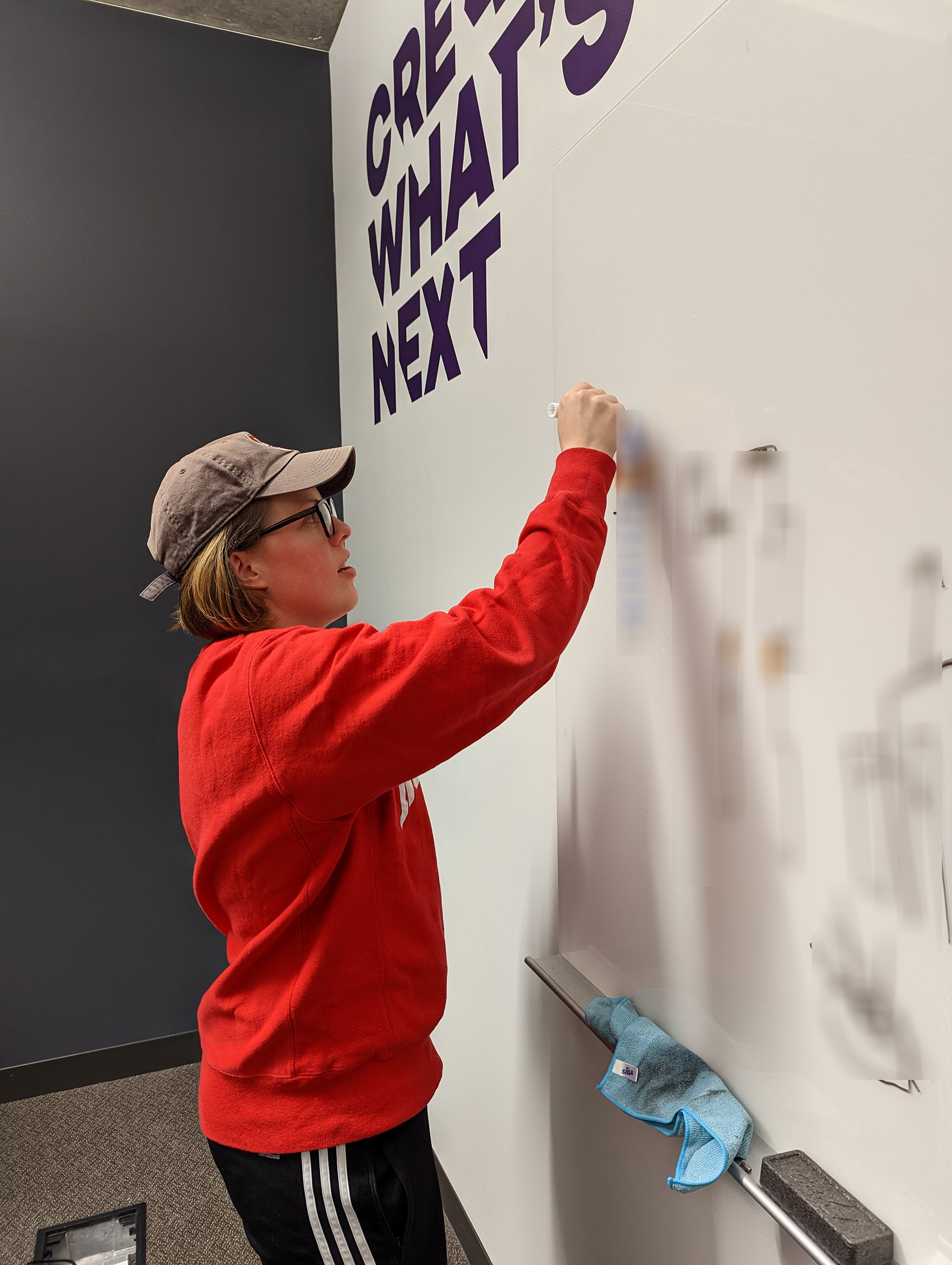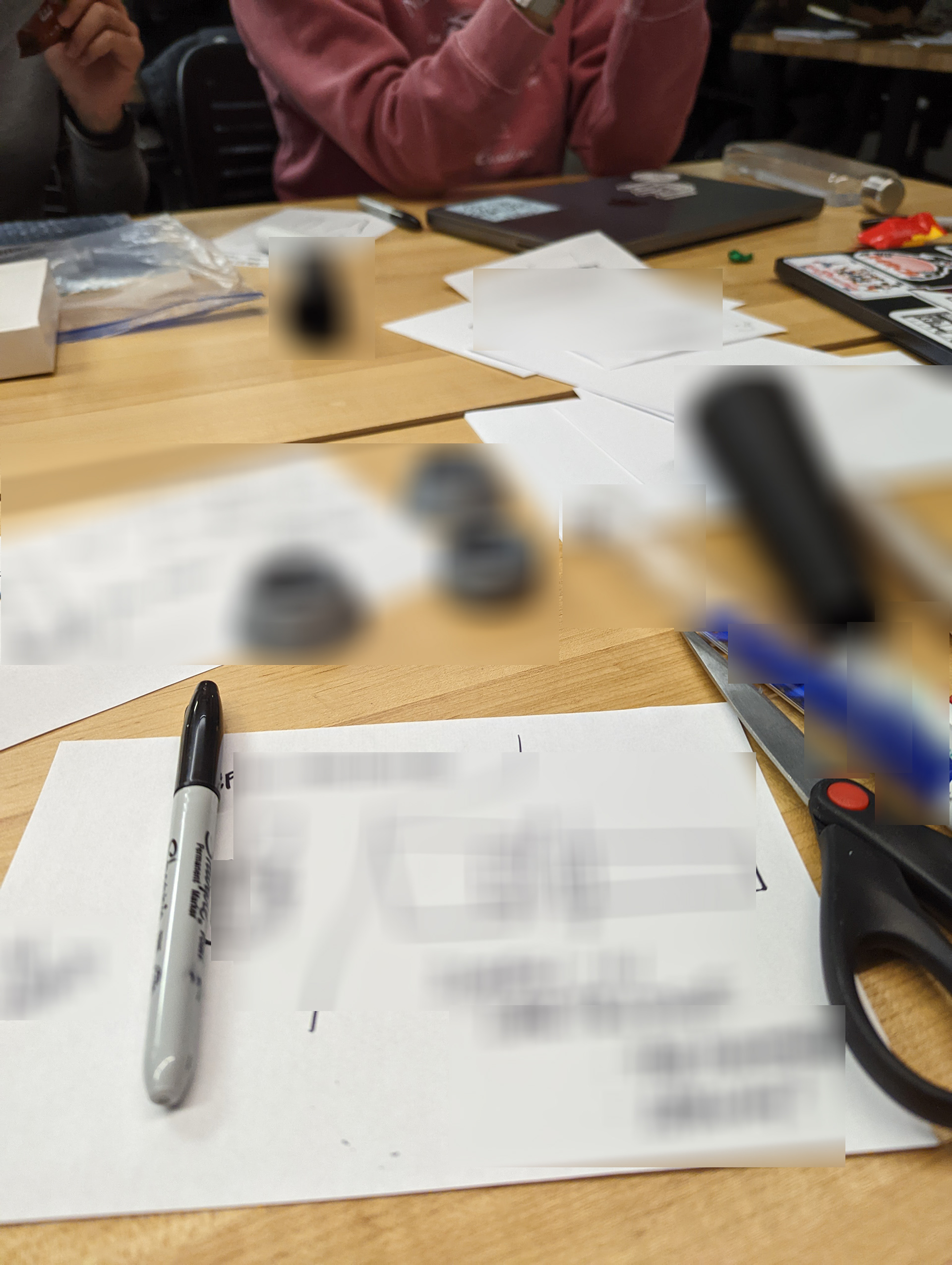Role
User Interviews & Testing, Research Synthesis, Ideation, Physical & Digital Prototyping
Project Collaborators: Amanda Acquaire, Emmie Fister, Patrick Giavelli, Sherry Xu
Context
We were tasked with enhancing consumer experience and designing a low-waste, system solution for a product in the oral care space.
This project continues to be under NDA with Procter & Gamble. Images and text may be blurred for confidentiality.
Deliverables
In accordance with the project brief, we presented the following to the Procter & Gamble sponsor teams and stakeholders:
Minimum Viable Prototype: 3D-printed, semi-functional representation of our final design
Final Deck: presentation summarizing our research and development journey with emphasis on
explanation of final design
Consumer Pitch Video: creative element to demonstrate the benefits of our final design and how it
meets a need
Executive Summary: documentation detailing process, design features, and next steps for further
development

Final Rendering

Executive Summary - Requirements

Executive Summary - Features
Takeaways
Have a contingency plan.
Even the best laid plans and intentions have potential for error, especially when the timeline is tight.
It’s easy to get stuck in brainstorming.
It’s exciting to think of all the possibilities of what a product or service could be, but, at some point, you have to keep moving forward to get to the end goal.
Process
Research
This project focused heavily on consumer research in various environments to enable our team to understand needs and tensions and to get iterative feedback for the development of our product. In total, we conducted:
8, one-hour informational sessions with consumers in their homes
&
16, one-hour interactive sessions with consumers on the Northwestern campus
of which I was able to lead five sessions. For each round of research, we developed discussion guides and prepared different sets of activities – including picture-based storytelling, ranking and sorting, and naming exercises – that matched with questions we had formed and hypotheses we wanted to test.
Leading a ranking activity with one of our consumers
For the interactive sessions, specifically, we were able to have two separate rounds which allowed us to go through another iteration of our prototypes and gain deeper insights into what worked well and what could be improved.
In addition to consumer research, we also conducted secondary research on the competitive space and analogous products in the market to frame the context of our project.
Synthesis
Coming together to gather our findings, observations, quotes, and activity information was a constant process that happened in both analog (good ole sticky notes) and digital (miro board) functions.
After we visited consumers in their home to learn about their routines and inclinations, our team spent a good amount of time journey mapping and collecting our notes to form our initial insights, tensions, and how-might-we statements. These were foundational for the duration of the project.
With our more product-based interactive consumer sessions, we focused on analyzing not only what our consumers said, but also what they did during our activities, as sometimes there was contradiction.
Through each phase, we referred to these waypoints and refined them to eventually build our design requirements.
Ideation
With both emotional and functional requirements designated, our team went through multiple iterations of brainstorming and prototyping at different levels of fidelity related to product form, feel, operation, and perception.

Whiteboard Doodling

Rapid Prototyping via 3D Printing

Sketching & Paper Prototyping
